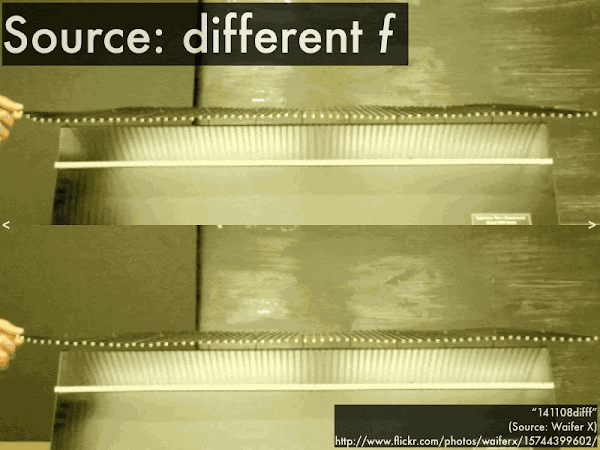Cuesta College, San Luis Obispo, CA
Students have a bi-weekly online reading assignment (hosted by SurveyMonkey.com), where they answer questions based on reading their textbook, material covered in previous lectures, opinion questions, and/or asking (anonymous) questions or making (anonymous) comments. Full credit is given for completing the online reading assignment before next week's lecture, regardless if whether their answers are correct/incorrect. Selected results/questions/comments are addressed by the instructor at the start of the following lecture.
The following questions were asked on reading textbook chapters and previewing a presentation on waves.

Selected/edited responses are given below.
Describe what you understand from the assigned textbook reading or presentation preview. Your description (2-3 sentences) should specifically demonstrate your level of understanding.
"Wavelength is the horizontal length of one cycle of the wave. Period is the time required of one up and down cycle."
"The speed of periodic waves is based on string tension and thickness. However, the frequency of the wave is set by the source."
"Transverse waves occur perpendicular to the direction the wave is traveling. Longitudinal waves occur parallel to the line of travel of the wave. String wave speed depends on the tension force and the thickness of the string."
"The different types of waves. Transverse waves, where the disturbance is sideways to the direction of the wave motion; longitudinal waves have the disturbance moving with the wave motion."
"I understand wavelength very much as I have had to learn about it in chemistry classes before. I also understand what a periodic wave is."
Describe what you found confusing from the assigned textbook reading or presentation preview. Your description (2-3 sentences) should specifically identify the concept(s) that you do not understand.
"I'm stuck on the hierarchy of these wave parameters. I'm confused on what it means that the wavelength is dependent on the independent speed and frequency parameters."
"At first I was confused with all of it, but then when I connected it to instruments I've played in the past it all clicked!"
"Standing waves are a little confusing to me. I understand that fundamental frequency of a string depends on the wave speed. But I guess I am unsure how a standing wave is any different. A little clarification in class on this would be great."
"I can't imagine the difference between longitudinal and transverse waves and how they cause disturbances in different directions."
"I will not understand many things when I read it."
"Nothing was really confusing, it all seemed to make pretty darn good sense to me."
A string of a given length has a certain linear mass density (mass/length) value. If this string is cut in half, then its linear mass density will:
decrease. ******** [8] remain constant. ************ [12] increase. ************ [12] (Unsure/lost/guessing/help!) ***** [5]

(Only correct responses shown.)
Faster wave speed v: there is (approximately) a tie. [43%]
Longer wavelength λ: there is (approximately) a tie. [27%]

(Only correct responses shown.)
Faster wave speed v: there is (approximately) a tie. [30%]
Longer wavelength λ: top wave (low frequency f). [73%]

(Only correct responses shown.)
Faster wave speed v: Along the right apparatus. [46%]
Longer wavelength λ: along the right apparatus. [73%]
Higher frequency f: there is (approximately) a tie. [8%]
For transverse waves on a string, classify each of these parameters are being "independent" (able to be changed without affecting other independent parameters), or "dependent" (will be changed when independent values are changed).
(Only correct responses shown.)
Amplitude A: independent. [32%]
Wave speed v: independent. [59%]
Frequency f: independent. [51%]
Wavelength λ: dependent. [70%]
Ask the instructor an anonymous question, or make a comment. Selected questions/comments may be discussed in class.
Not sure how to classify the parameters as independent or dependent."
"I had a problem with one of the homework problems. Catapults are the inferior siege machine, if you want to launch a 90 kg projectile over 300 m, use a trebuchet."
"I just haven't gotten to it yet, but I will tonight."
"I am confused about fundamental frequency. It says if a string is periodically disturbed at the same frequency as its fundamental frequency, then the string will undergo resonance. What exactly is fundamental frequency and resonance?" (We'll defer that topic for next Monday.)
"Do you go through all of these responses? If you don't specifically address this question later, how will I know?" (If you need a specific question answered, e-mail me directly or see me in person. Otherwise I read through everyone's responses in order to prioritize what I can address during class time.)
"Your examples, figures and wording are pretty confusing in a lot of the material and I think it misleads some students."
No comments:
Post a Comment